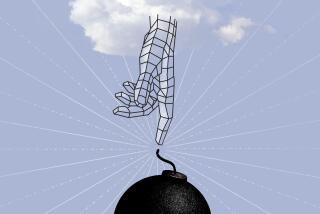Microsoft co-founder Paul Allen settles some old scores in memoir
- Share via
This memoir of Paul Allen, co-founder of Microsoft, has the narrative allure of a biopic. The story and some of the characters are familiar, but there is an unavoidable fascination in seeing the inevitable tale unfold.
It is all here: how a mismatched pair of young computer hobbyists ate pizza and wrote code late into the night, crossed swords with Steve Jobs, outsmarted the giant IBM and walked off with the crown jewels of the new PC industry — all while in their 20s.
Yet as with all memoirs by multibillionaires, “Idea Man: A Memoir by the Co-founder of Microsoft,” published by Penguin, inevitably prompts two nagging questions: Why has Allen bothered to write his version of events that took place three decades or more ago? And why now?
The reader is alert for evidence of self-justification or the settling of old scores, fair or not. Both seem in ample supply.
One of the most important moments in any biopic is that thrill of recognition when the central figure first appears, his character familiar but undeveloped. In the privileged private school of Lakeside in Seattle, that moment comes when a young Bill Gates edges into the computer room where the older Allen has taken up residence.
A “gangly, freckle-faced” 13-year-old with a “scruffy-preppy look” of sweater and tan slacks, Gates is a pint-sized version of the future tech mogul. In Allen’s telling description: “He was smart. He was really competitive; he wanted to show you how smart he was. And he was really, really persistent.”
In a scene that conjures up Hollywood fantasies of precocious children outsmarting the adults, the young Gates reads his parents’ copy of Fortune magazine and muses on what it’s like to run a huge corporation.
The Gates that emerges from these pages is both familiar and new. Although intent on turning the pair’s programming hobby into a business — he falls asleep at a keyboard from exhaustion, wakes up and carries straight on from where he left off — he also displays an unexpected, daredevil side.
He drives fast cars, slides down banisters head first and recklessly bounces across the wake of a speedboat on a single ski, shattering a leg (you can almost see the actor playing the young Gates nonchalantly flicking back that famous forelock).
Gates is the driven, ambitious pragmatist, not above cutting corners to get his way. Before long, he is tyrannizing the employees of the small software company he and Allen have founded and bullying Allen into giving up his fair share of the business.
It is at this point that the reader’s internal alarm starts to sound. Allen is building a picture of a man whose character is diametrically opposed to his own more cautious, cerebral and unworldly style.
All of this allows him to depict himself as the “Idea Man” of his book’s title: the visionary who sees the coming era of personal computing and, later, the wired world of the Internet, but who lacks the ruthless streak needed to succeed in business.
Gates is the opposite: a brilliant business strategist but without the vision to understand the full effect of the microprocessor breakthroughs that are about to unleash the personal computing era.
In this account, Gates even argues against the idea that Microsoft should write an operating system for the forthcoming IBM personal computer, the very thing that was to lay the foundation for the company’s software dominance of the tech world for the next quarter of a century.
All this serves to set up the most pointed moments of the drama. Gates persuades Allen to yield him a 64% share of their new software business. On another occasion, Allen angrily confronts him after overhearing Gates and Steve Ballmer, Microsoft’s new business head, discuss reducing Allen’s shareholding and influence in the company.
Although the book revolves around a handful of scenes such as these, which clearly still hurt, Allen also tells a fascinating tale of the early days of the software industry.
It was a time before intangible computer code became recognized as a standalone business, when schoolkid hobbyists could teach themselves the ropes and soon find themselves in a race to write the foundational software needed to run the first rudimentary PCs.
Allen’s claim to tech immortality — and the mind-bending wealth that followed — rests on a brilliant two months of code-crunching in his early 20s.
At 29, Allen suffers a bout of cancer and decides the moment has come to make his break with Gates (who tries to buy back his Microsoft shares on the cheap).
The rest of the book — almost half of it — recounts a later life that has involved owning basketball and football teams, funding private space exploration and losing $8 billion on bad cable television investments.
It is impossible to avoid the thought that all this has been funded by Microsoft stock, which exploded in value after Allen left the company, as his old partner went on to become the dominant business figure of the tech world.
But who said memoirists have to show gratitude?
Richard Waters is the San Francisco bureau chief for the Financial Times of London, in which this review first appeared.
More to Read
Sign up for our Book Club newsletter
Get the latest news, events and more from the Los Angeles Times Book Club, and help us get L.A. reading and talking.
You may occasionally receive promotional content from the Los Angeles Times.






